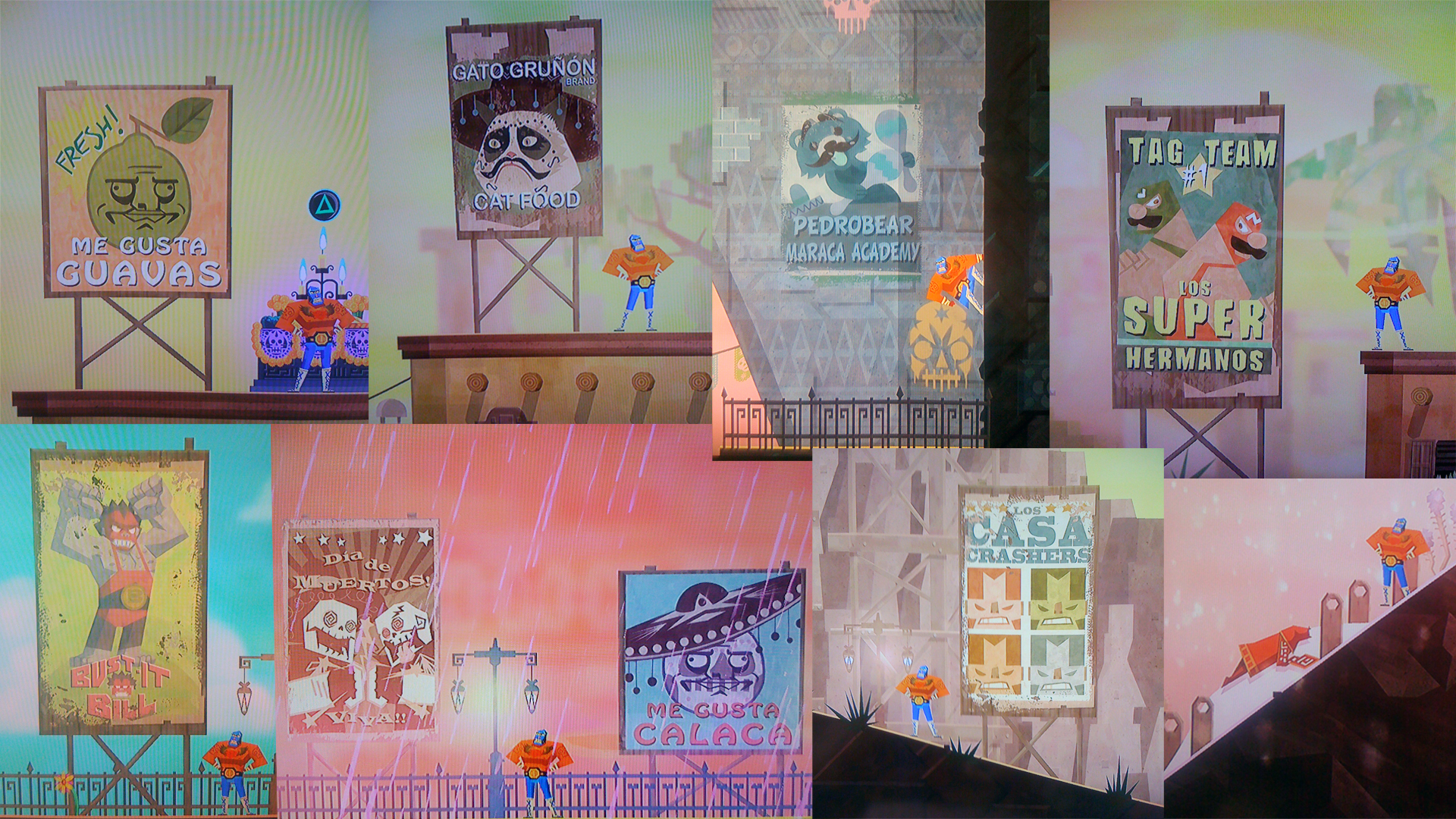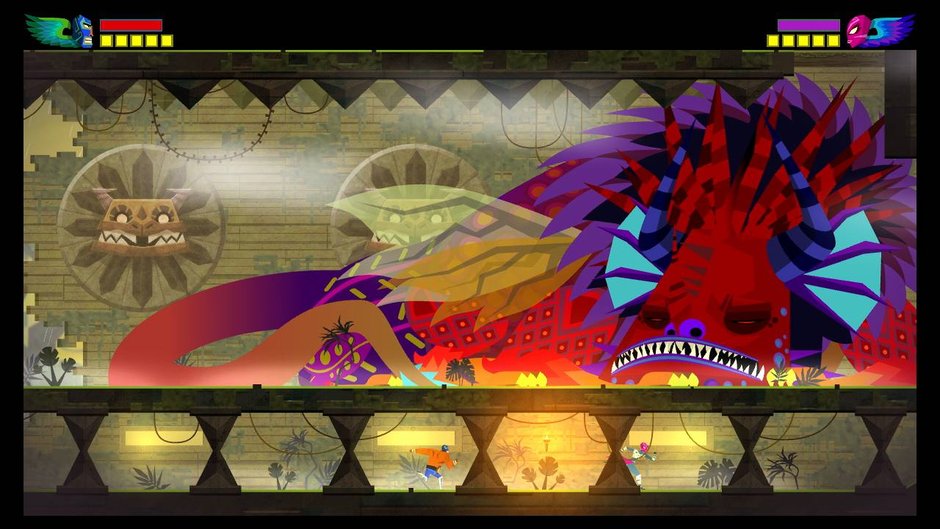Indie titles have been gaining tons of traction lately. With titles like Minecraft and Bastion showing AAA companies and gamers that you don’t need a staff of hundreds to create high quality products, more people have been willing to give good ole indies a try. And that’s how I stumbled upon Guacamelee. I needed something to play on a plane ride and after downloading Final Fantasy VI for the fifth time, I decided I wanted a change. I’d heard the name before, but only knew it was an indie title having something to do with luchadors. On a $15 whim, I downloaded it and played it on my Vita. Is it as entertaining as the title suggests, or would I wish I had just said nah-chos?
Guacamelee stars Juan Aguacate, an agave farmer with a magic luchador mask on a mission to save his childhood friend and possible love interest, who also happens to be El Presidente’s daughter, from the evil undead skeleton Calaca. The story not only features Mexican folklore, but embraces is wholly and gives its own take. From the land of the dead to the building architecture and casual Spanish, this game really takes on the culture of Mexico and makes it accessible by having fun with it.
This game not only pulls from Mexican folklore, but from internet and video game culture for its jokes. With luchador posters featuring the likenesses of Bane and Batman to Super Meat Boy and Mega Man, and even Grumpy CAt, this game has so many in-jokes, you’re always looking for more. In fact, the primary way you get new moves is by destroying Choozo statues. If you’re a fan of the Metroid series, you’ll spot the similarities immediately. The most impressive thing about these references is that none of them feel gimmicky or out of place. In the same way that Guacamelee takes on Mexican culture by integrating it into the game, so too is the culture cultivated by the gaming community.
The gameplay is excellent. It’s basically a platforming puzzle-ish game with bosses. Think Metroid, but with melee only weapons. Well-balanced enemies along with a snappy and intuitive combat system make fights challenging, but never overly frustrating. After pummeling an enemy enough, you can pick them up to throw them at others, adding another dynamic to play in that you may want to focus on a group of enemies quickly just to pick up one and throw him at the rest, leading you into a tossing parade of baddie carcasses across the screen.
It’s great.
Another interesting aspect about the combat is that your special moves are not only utilized in fights, but also just to navigate. The first move you get is a punch that sends you skyward and it acts as a sort of second jump when you need just a little extra height. In the same way bombs in Metroid can let you ball-hop, the versatility of moves in Guacamelee aren’t just limited to combat, a design choice I quite enjoy.
The art style, as you can tell by the images above, is relatively simplistic. It looks almost hand-drawn, like Samurai Jack. The simple art style means that variations in color mean much more. For example, when the hyper-colorful splash screen that means you got a power-up appears, it feels really visually satisfying. The less intense graphics also mean that the frame-rate is buttery smooth all the time.
The game also features co-op, letting one other friend join in on the baddy smashing action. Though you do have to be connected to the same system, meaning no luck for Vita-only owners, you can connect the Vita to a PS3 to jump in.
Another quick point to note is that the power-up controls felt sloppy on the PS3. I had no problems selecting what move to use on my foes on Vita, but when I switched to my old Sixaxis, I had to be more precise with my motions.
Verdict: Overall, Guacamelee is a fantastic game, especially for the price. It’s funny without being annoying, the combat is fluid and dynamic, and it has enough replay value to warrant playing a few times. If you like games like Metroid or the enemy-juggling of Devil May Cry, Guacamelee is the next indie title you’ll fall for.





















